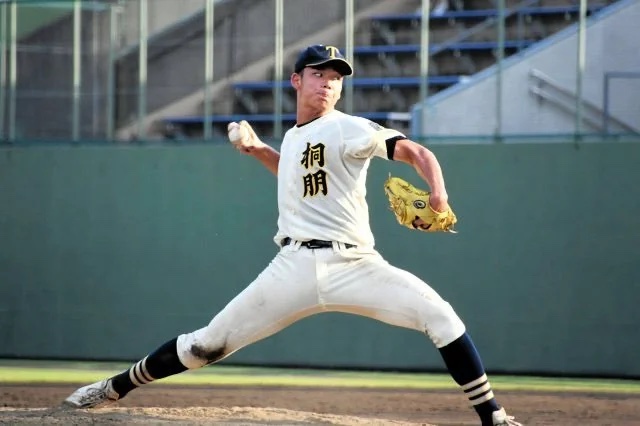



The Athletics announced that eighteen-year-old two-way prospect Shotaro Morii has signed with the team.
アスレチックスへようこそ!森井翔太郎選手!
(Welcome to the Athletics Shotaro Morii!) pic.twitter.com/dMzh9kGvnk
— Athletics (@Athletics) January 15, 2025
Even generational talents like Shohei Ohtani and Kotaro Kiyomiya had once weighed the possibility of bypassing NPB, but the risks were too significant. So what’s different now?
Traditionally, Japanese players rarely appear in Major League Baseball’s international amateur free agency period. Exceptions are unusual cases like Yuki Kaito, who signed with the Kansas City Royals out of middle school, or Kazuhito Tadano, who pursued an MLB career after a pornography scandal in college left him unwanted in Japan.
Otherwise, top Japanese players have almost always opted for the domestic Nippon Professional Baseball Draft. Morii, however, may signal a new trend: elite Japanese amateurs skipping NPB entirely to fast-track their path to MLB.
Tazawa Rule
The Tazawa Rule, named after former Boston Red Sox pitcher Junichi Tazawa, served as a strong deterrent in the past. It was created in 2008 when Tazawa bypassed the NPB Draft to jump straight to MLB from Japanese corporate ball.
Under this rule, high school players who signed international contracts faced a three-year waiting period before re-entering the NPB Draft, while college players had to wait two years. Though the rule was officially abolished in 2020, the prevailing principle and ethos that players should begin their professional careers in NPB still lingers.
The Rintaro Effect
In October 2023, Rintaro Sasaki’s decision to forgo the NPB Draft in favor of attending college in the United States sent shockwaves through Japan’s baseball landscape. The slugging first baseman, who attended Ohtani’s alma mater, Hanamaki Higashi, eventually committed to Stanford. He played in the MLB Draft League last year and is set to make his NCAA debut next month.
Like Sasaki, Shotaro Morii had four potential paths ahead of him: enter the NPB Draft, attend college in Japan, attend college in the United States, or sign with an MLB team. A two-way player from Toho High School in Tokyo, Morii was widely seen by scouts and experts as a top ten prospect in his class and could have chosen the security of an NPB career. Instead, he set forth on a groundbreaking journey.
“There have been amateurs that went to the U.S. before, but Sasaki was a consensus first-round pick,” Morii said last spring. “It set a precedent and made it easier for people like me to consider his path.”
Morii’s Journey Begins
In September 2024, Morii announced his decision to skip the NPB Draft—where he was a projected first-round pick—and opted to sign directly with an MLB organization.
At least nine teams, including the Los Angeles Dodgers, reportedly scouted and pursued Morii. Ultimately, he committed to the Athletics for a $1.5 million bonus, the most ever for a Japanese amateur outside NPB.
“He’s a very talented baseball player,” said assistant general manager Dan Feinstein, who acknowledged the contributions of director of international scouting Steve Sharpe, Pacific Rim coordinator Adam Hislop, and Japan scout Toshiyuki Tomizuka in reaching the agreement.
On the field, Morii is determined to continue pursuing two-way duties. The A’s will give him the opportunity to do that. Topping out at 95 mph on the mound, his arm talent is undeniable. He sits 89-91 on the fastball and throws a 12-6 curve, slider, and splitter as his secondaries.
As a shortstop, he exhibits smooth movements and a quick transfer. At the plate, he shows the ability to stay back on the ball and generate effortless power to his pull side.
“Morii did everything […] that would have garnered him a scholarship to many Division 1 Power 5 schools,” said Jeffrey Kahn of Five Tool Baseball after watching Morii last January.
More to Come?
The obvious question on many fans’ minds after Sasaki and Morii’s moves is whether this signals the start of a larger trend of Japanese prospects bypassing NPB for American baseball. The ultimate success of their careers will likely influence whether others consider it a viable path.
Potential reforms to the MLB-NPB posting system — allowing more stars like Roki Sasaki to move to MLB at a younger age — will also have a significant impact. While a rapid cultural shift is unlikely, these decisions are poised to encourage a few more players to follow suit in the coming years.
Shohei Ohtani has already demonstrated to a new generation of Japanese players that reaching the pinnacle of the sport is within reach. As such, more young players may find this route increasingly appealing, though only time will tell if such moves truly pay off.